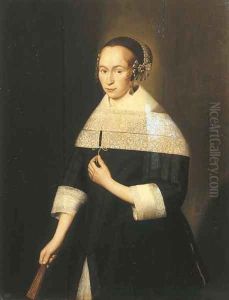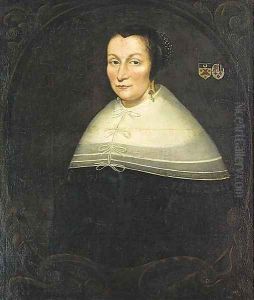Jan Albertsz. Rootius Paintings
Jan Albertsz. Rootius was a Dutch Golden Age portrait painter, born in the year 1615 in Medemblik, a small town in the Netherlands. His life and work are emblematic of the rich artistic traditions that flourished in the 17th century in the Dutch Republic. Little is known about his early life or training, which is common for many artists of his time. However, it is believed that he received his artistic education from a local master in the Northern Netherlands, which was a common practice. Rootius specialized in portraiture, a genre that experienced immense popularity during his lifetime, thanks to the burgeoning Dutch middle class's desire for personal and familial commemoration.
Throughout his career, Rootius developed a distinctive style characterized by a keen attention to detail, a subtle use of light and shadow, and a remarkable ability to capture the personality and inner life of his sitters. His portraits are known for their realism and sensitivity, qualities that made him sought after by a clientele that included prominent citizens and local dignitaries. Despite the high demand for his work, Rootius never ventured far from his hometown, choosing instead to build his reputation within his local community.
Jan Albertsz. Rootius's contribution to Dutch art is significant, yet he remains a somewhat obscure figure, overshadowed by the likes of Rembrandt and Vermeer. His works, however, offer a valuable glimpse into the societal and cultural dynamics of 17th-century Holland, reflecting both the individual identities of his sitters and the broader aesthetic tendencies of the period. He died in 1684, in his hometown of Medemblik. After his death, his work continued to be appreciated by connoisseurs and collectors, although he never achieved the posthumous fame of some of his contemporaries. Today, Rootius's paintings can be found in various museums and private collections, where they are appreciated for their craftsmanship and historical value.

